#well these are all hangouts but i feel like i only happened upon this sequence of events by chance
Text



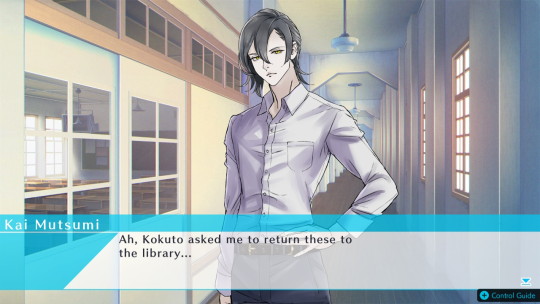


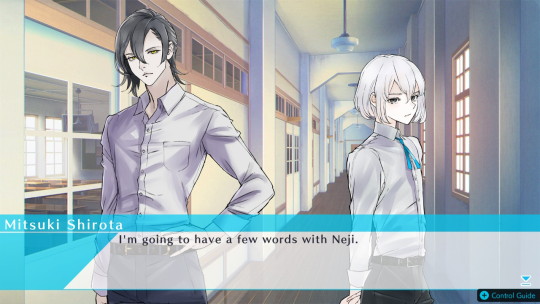
I find that jj gives you maybe too much freedom to choose who to hang out with sometimes. you'll just randomly see kai carrying a bunch of books, and you'd think that's just neji being neji. but if you happen to hang out with neji a few weekends prior, you'll know it's because enishi caught on to him making a mini library of his own. and in neji's character story, which happens during the newcomers' performance arc, apparently mitsuki already reprimanded neji before about making kai his errand boy lol. but you could easily miss all of that if you were just hanging out with one person!! fascinating, but also frustrating lol
#mine musings#liveblogging jj#not to mention!! so many random events!!!#and by random i mean they really are at the mercy of rng!!!#well these are all hangouts but i feel like i only happened upon this sequence of events by chance#which i guess doesn't really matter in the grand scheme of things#but it's cool that they do connect yknow? makes me wonder what else i might have missed#njmtsks
20 notes
·
View notes
Text
Yer fond of me lobster ain’t ye?

Another year, another broken promise that I’d write more often. I’m not going to fool myself going forward and expect I’ll be able to keep up with reviewing every movie I see. However, I’ll continue to write my year-end movie review and perhaps a couple here and there when I feel inspired.
Looking back to last year’s post, I wouldn’t make too many changes, though I would certainly move Into the Spider-verse slightly higher up. I would also consider adding Upgrade to the list for how brazen it is.
Most of the films I called out as ones to watch for 2019 ended up being either on my list or in the composite image, which goes to show that it’s worth getting excited for new films more often than not.
Vancouver being the way that it is, sometimes we don’t get timely releases of films when other cities do. As a result, I haven’t had a chance to see 1917 and Uncut Gems yet. The latter of which I’ve been dying to see for months and would probably feature on this list.
Here’s the 10 best films I’ve seen from 2019:
10. John Wick: Chapter 3: Parabellum
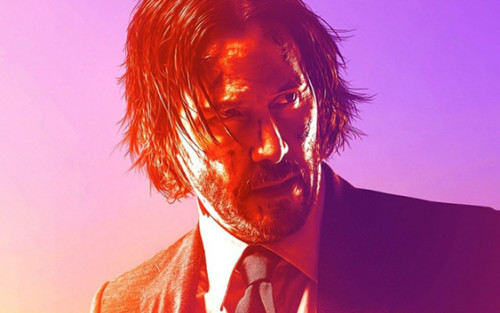
Whereas John Wick: Chapter 2 was the perfect escalation of its pared down predecessor, Chapter 3 is merely an excellent continuation of the newly minted franchise. However, while not bringing anything entirely new to the world of John Wick, it is still an intensely entertaining film. The first 20 minutes is some of the best fight choreography in the series to date and enough to secure a spot on this list.
9. Long Day’s Journey into Night

From director Bi Gan, Long Day’s Journey into Night is a noirish drama about a man (Huang Jue) returning to his hometown following the death of his father to track down his lost love (Tang Wei). The film is a slow burn that jumps between past and present before descending into a surreal 60 minute single take shot filmed in 3D. Regretfully, the only screening I could attend was entirely 2D, but nonetheless, the sequence was still enthralling. This is the type of film that proves that spectacle doesn’t necessarily need to be tied to tentpole movies.
8. Booksmart

Olivia Wilde’s directorial debut suggests she has an effortless understanding of comedy. Written by a quartet of female writers, Booksmart feels like Superbad for a new generation (I can’t believe that film came out 12 years ago). Interestingly, Jonah Hill’s sister, Beanie Feldstein stars, alongside Kaitlyn Dever (daughter of the guy that voiced Barney the Purple Dinosaur). While it would be easy to say it’s “the female Superbad,” Booksmart is in fact much more than that. Replacing the misfits trying to get laid story with one about a pair of overachievers realizing almost too late that there’s more to life than good grades lets the film be looser and allows the comedy to happen more naturally.
7. Midsommar

Ari Aster’s follow-up to 2018′s Hereditary began filming almost immediately after wrapping post-production on his previous film. As a result, Midsommar has that extra layer of a director exhausting himself by putting everything on the screen. Midsommar is a much more mature work than Hereditary and one that took a while to grow on me. My initial reaction was less enthusiastic than it is now, but it’s one of the films from 2019 that has stuck with me the most. I imagine a second watch or the extended director’s cut might raise my appreciation of it even more.
Florence Pugh gives a knockout performance that when combined with her roles in Little Women and last year’s Little Drummer Girl prove that she’ll be a star in no time.
6. Knives Out
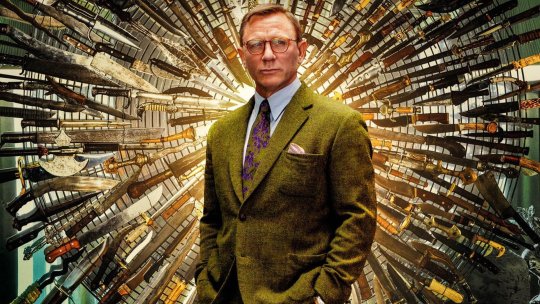
Rian Johnson’s first post-Star Wars film sees him reinvigorated and working with a bigger name cast than he has in the past. Essentially a whodunnit along the lines of Agatha Christie, Knives Out follows Daniel Craig’s southern-fried detective Benoit Blanc as he investigates the murder of a wealthy publisher (Christopher Plummer). In addition to playing with a few plot twists, Johnson includes a couple of structure twists as well that turn the film on its head.
In addition to Craig’s hammy performance, other standouts include Ana de Armas and Chris Evans as the publisher’s caregiver and grandson, respectively.
Johnson has hinted at the possibility of more Benoit Blanc mysteries, and as long as Daniel Craig is onboard, I’ll gladly watch them.
5. The Lighthouse

In Robert Eggers’ followup to The Witch, Willem Dafoe and Robert Pattinson play a pair of lighthouse keepers in isolation. As would be expected, The Lighthouse is a paranoia-fuelled chamber piece, with Dafoe’s gruff experienced lighthouse keeper getting on the nerves of the younger Pattinson. And while this setup allows the two leads a chance to really dig into the 19th century dialects, the film takes the occasional departure into the eldritch for a very unsettling film.
As with Black Philip in The Witch, there’s a standout animal character in The Lighthouse - fittingly, a seagull.
4. Once Upon a Time ...in Hollywood

Quentin Tarantino’s presumably penultimate film is perhaps his most mature work, ruminating on the idea of legacy and the film industry as a whole. Once Upon a Time ...in Hollywood is almost a Tarantino hangout movie reminiscent of parts of Jackie Brown and Pulp Fiction. A lot of time is spent on scenes that don’t necessarily lead to the film’s climax, but allow the characters room to breathe and feel real. Other than the historical event hinted at throughout the movie, the film doesn’t seem to have a particular direction, which allows you to live in the lives of these characters more than if it was purely plot driven.
The main cast of Leonardo DiCaprio, Brad Pitt, and Margo Robbie is great, but it’s Pitt who puts in a career best performance. There’s a quietness and a sadness to his character that brings some added depth to an otherwise bold cast.
3. Ad Astra
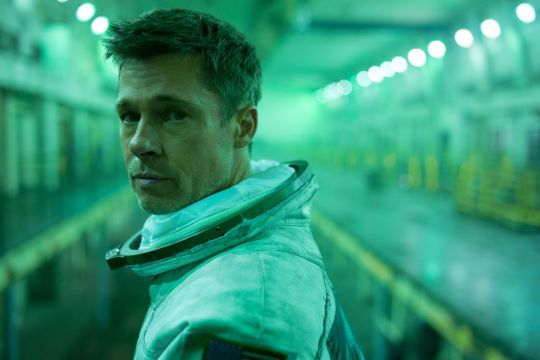
Brad Pitt’s other great performance this year is in James Gray’s Ad Astra. Having seen Gray’s The Lost City of Z and purposefully avoiding trailers and reviews, my expectation for this film was a reflective voyage centred around the ideas of obsession, loss, and family. All of these ideas were present in Ad Astra, but the real surprise was how seamlessly a space opera was added into the story. I never thought I’d see a lunar shuttle chase, but I’m glad I did.
The amount of casual sci-fi world building in the film is staggering, with entire premises treated as banal. We get to see Pitt’s Clifford McBride travel from Earth to the Moon mundanely on a commercial flight. Most films would take the opportunity to spoon feed to the audience why this is odd, but Ad Astra treats it as normal as the characters do, making it all the more fascinating.
2. The Farewell

Starring Awkwafina, who has quickly shot to stardom after featuring in Crazy Rich Asians, The Farewell gives the actress the chance to stretch her dramatic muscles playing Billi, who returns to China to visit with her grandmother who has cancer. Billi’s family insists on keeping the grandmother’s illness a secret from her so she can live out her life in happiness, while Billi struggles with the morals of lying to her grandmother. This premise allows for not only the comedy of misunderstanding, a staple in comedy, but also emotional tension and the devastation of preparing to send off a loved one.
The comedy-drama balance is handled expertly by director Lulu Wang, making The Farewell the movie I both cried at and laughed at the most this year.
1. Parasite

Had you told me a couple of months ago that my picking Parasite as the best movie of the year could be considered a safe choice, I would have scoffed. Yet here we are, and Parasite has widely been hailed as the best film of the year. I suppose in hindsight it’s not hard to see why. It’s both a crowd-pleasing film and a film that’s deeply disturbing and thrilling.
After having seen Bong Joon-ho’s last five movies, one would be forgiven for expecting a linearity in Parasite. Most of his films tend to have a point A to point B element with an expected (though often subverted) outcome. Heck, Snowpiercer is about a group of people moving from the back of the train to the front, one car at a time. Yet Parasite is different. The film sets up a premise you only find out about as it happens and is quickly overturned once you’re comfortable with it.
I saw this movie the same day I saw Joker and the difference in how the subject matter of class is treated is stark. Whereas Joker wanted to go all dark and Taxi Driver with the theme, Parasite had fun with it and let the elements of drama, comedy, and horror slide along the theme of class.
Like Bong’s Memories of Murder, Parasite will be one of those films I endlessly revisit.
Honourable Mentions
Films that almost cracked the Top 10 that I wanted to shout out here are Us and Doctor Sleep for being really solid, exciting, horror-thrillers. As well as The Irishman for being a classic Scorcese film that gives De Niro and Pacino ample time to with each other. Finally, I wanted to applaud Avengers: Endgame for not only managing to pull off such an ambitious finale, but to make it so goddamned fun.
2020
This year I’m looking forward to new blockbusters from two of my favourite directors, Christoper Nolan and Denis Villeneuve - Tenet and Dune, respectively.
Despite the stumble with Spectre, I’m extremely excited for Daniel Craig’s last outing as Bond with No Time to Die, by auteur Cary Fukunaga. I can’t wait to see how his style meshes with the Bond template.
Also of great interest are the new films from David Fincher and Edgar Wright - Mank and Last Night in Soho.
3 notes
·
View notes
Text
Episode 47*: Political Power

“We'll face the night together, and we'll survive.”
Political Power is a strange beast. On the one hand, it’s a return to Steven hanging around Beach City, which he hasn’t done much of post-Lion 3. On the other hand, it’s an intense Homeworld Arc episode that transitions us to the finale. And on a mysterious third hand, it’s a crucial episode in Steven’s personal arc, containing a life-changing epiphany. Oh, and it’s also funny!
Let’s start with that last bit, because humor greases the gears for these three major elements to work in harmony. Mayor Dewey may drive around with a giant head that endlessly shouts his title, but the man himself is hardly as bombastic as fellow agents of comic relief like Onion or Ronaldo. A big part of that is voice actor Joel Hodgson, the comedy legend behind Mystery Science Theater 3000. Have you ever watched a funny video review of a bad movie? Or by extension, a bad television show, or a bad game? Literally any filmed comedic review of any bad media? There’s a good chance you have Joel Hodgson to thank somewhere down the line of that reviewer’s influences.
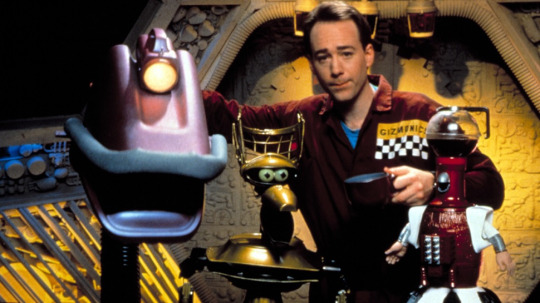
Hodgson imbues lines like “Car wash kid” and “Let’s all scream for...ice cream” with just the right inflection and timing to make them shine, and Political Power gives him plenty of room to flex. But beyond Dewey’s great delivery, he stumbles upon some of my favorite situational humor of the first season. In particular, I love his exasperated declaration that Beach City is a “magnet for disaster”, and the reveal that his entire career hinges on distracting its citizens. Awareness of the Crystal Gems’ exploits has always been ambiguous on this show: as I put it all the way back in my Beach Party review, this is a world where magic is unusual, but not unheard of. Even then, characters are either uninvested in the details or, in the case of Ronaldo, failing to see how strange incidents correlate with the Gems. But Bill Dewey is smarter than he looks and acts, and when a crisis hits, he immediately deduces that the Gems are the source.
At his core, Dewey does want to help. But he’s a normal guy in a magical world (not unlike previous episode focus Greg) and at a certain point all you can do is hand out glowsticks and hope for the best. This isn’t to say he’s flawless, as his inner politician laces his most well-intentioned actions with self-aggrandizing pins. Moreover, his Band-Aid of a plan is vastly inferior to helping his citizens prepare for a major emergency, but—and this is one of the few times you’ll hear me use this excuse—hey, it’s a kid’s show. You’re allowed to have well-meaning but exaggeratedly dopey adults in this medium without the foundation of reality crumbling apart, so long as it’s true to the character.

Making Dewey a parallel to the Gems is a masterstroke: I don’t think anyone in their wildest dreams would’ve associated the two before this episode. Even here, we see Dewey’s freakout as comedic while the Gems’ freakout is dramatic. But both lie about the truth to protect people, and neither is correct to do so, a conclusion Steven comes to midsentence as he protects Dewey from the wrath of Nanefua’s mob (did I mention Nanefua finally returns?).
This is a pivotal revelation. Steven has always felt left out from what the Gems are doing, and his growing competence has lent a dramatic edge to this exclusion, but before now we’ve never seen him seriously stop and consider why. We may learn from Future Vision that Garnet, and by extension Amethyst and Pearl, keep him at a distance to protect him, but he’s too busy losing his grip about his many imminent dooms to realize it. With Peridot coming and the Gems going into overdrive, something had to give, and this was it. Now that Steven has an idea of why he’s in the dark, he can work through it and actually contribute to the team.

It’s no coincidence that this episode is immediately followed by The Return, where Greg provides another major revelation about the Gems that doesn’t come from the Gems themselves. Our heroines are too set in their ways to change without prompting, so Steven needs these external sources, like Dewey and Greg, to start the process of real communication. And I love that once it gets rolling, the Gems don’t hold back. They admit that they’re outclassed, and that they’re scared. This is similar to Pearl’s admission that the Gems don’t know what’s going on in Marble Madness, but coming clean about how this affects their emotions is a big step.

As a hangout episode...again, Nanefua’s back, and that’s all we need for a successful Beach City outing. But beyond any sane fan’s favorite citizen, we get Onion threatening with a bat, Pop Fryman getting real about his sons, and Suitcase Sam in all his eyepatched glory. There isn’t as much interaction as in previous civilian episodes, but then again, this isn’t just a civilian episode.
I love that we jump between the humans and the Gems instead of focusing entirely on one or the other. A standout sequence is Steven eavesdropping below his deck, showing only the Gems’ feet as he gets hears snippets of information and spots the Quartizine Trio hiding under a tarp. We have time to stew on this, as well as their about-face when they notice he’s around, when we get back to Beach City proper. But we’re already stewing on what’s going to happen come sundown. By offering twice the tension, Political Power ramps us up from the end of The Message to the beginning of the finale.
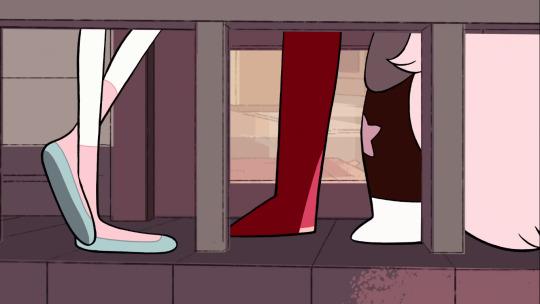
Tension and comedy go hand in hand; one of the most popular theories of humor, the Relief Theory, posits that the basis of humor comes from relieving a situation’s tension. There have been a few instances of this in Steven Universe before: think the endings of Rose’s Room and Mirror Gem, which close a nail-biting sequence with a goofy joke. Political Power takes a different approach: it’s funny, sure, but it isn’t trying to defuse the looming danger of Homeworld. One needn’t look further than the closing credits, which to this point have always included a version of “Love Like You,” but here contains crescendoing static.
Bad things are coming to Steven Universe. Bad people are in power in our universe. But if we devote ourselves to the love and truth of a healthy family and community, the light will return one day.
Fusion Vision!
Nanefua’s particular disdain for Mayor Dewey pays off in a major way for both characters in Dewey Wins, the distant retort to Dewey’s perspective on politics. Mayor Pizza is also far more effective at implementing emergency plans with the power of her Nanaphone, as seen in Reunited.
I’ve never been to this…how do you say…school?
For the first time, but not the last, Hilary Florido’s High School AU is the only promo art we get. This is me not complaining about that.
I guess you could read it that way…
Obviously this episode looks a bit different after Shirt Club, but honestly I think the biggest change is the lack of time between Steven Hangs Out episodes more than its examination of the Deweys. Without Shirt Club, this is the first time Steven’s mulled around Beach City since Watermelon Steven, not counting fusions.

Not to be a broken record on preferring the aired version, but I feel that Shirt Club works way better after we’ve gotten to know the Deweys more in Political Power and Joy Ride. We only get a glimpse of Buck here, and focusing on the pair separately lets us better understand how they might clash when put together.
We’re the one, we’re the ONE! TWO! THREE! FOUR!
Political Power does pretty much everything right, but in the end, it’s still a set-up episode that struggles to stand on its own. Even if Steven learns something big, the tone doesn’t treat it as that much of a deal compared to other climaxes, because there’s bigger fish to fry. It makes it into “Love ‘em” by a hair, but it still makes it!
Top Ten
Steven and the Stevens
Mirror Gem
Lion 3: Straight to Video
Alone Together
Rose’s Scabbard
Coach Steven
Giant Woman
Winter Forecast
On the Run
Warp Tour
Love ‘em
Laser Light Cannon
Bubble Buddies
Tiger Millionaire
Lion 2: The Movie
Rose’s Room
An Indirect Kiss
Ocean Gem
Space Race
Garnet’s Universe
The Test
Future Vision
Maximum Capacity
Marble Madness
Political Power
Like ‘em
Gem Glow
Frybo
Arcade Mania
So Many Birthdays
Lars and the Cool Kids
Onion Trade
Steven the Sword Fighter
Beach Party
Monster Buddies
Keep Beach City Weird
Watermelon Steven
The Message
Enh
Cheeseburger Backpack
Together Breakfast
Cat Fingers
Serious Steven
Steven’s Lion
Joking Victim
Secret Team
No Thanks!
4. Horror Club
3. Fusion Cuisine
2. House Guest
1. Island Adventure
21 notes
·
View notes
Text
RELAPSE CAN AND DOES HAPPEN.
Relapse is more than just using alcohol or drugs. It is the progressive process of becoming so dysfunctional in recovery that self-medication with alcohol or drugs seems like a reasonable choice.
The relapse process is a lot like knocking over a line of dominoes. The first domino hits the second, which hits the third, and soon a progressive chain reaction has started. The sequence of problems that lead from stable sobriety to relapse are similar to those dominoes. There are two differences. First, each domino in the line (i.e. each problem that brings us closer to substance use) gets a little bit bigger and heavier until the last domino in the sequence is ten feet tall, four feet wide, and a foot thick. As this 10,000 pound domino begins to fall on us, it is too heavy for us to handle alone. The second difference is that the dominoes circle around behind us. So when the last domino falls, it hits us from behind when we’re not looking.
So here we are, moving along in recovery. We tip over one small domino. No big deal! That domino hits the next, and then the next. A chain reactions gets started. The first dominoes are so small that we can easily convince ourselves that it’s no big deal. We look the other way and start doing other things. All of a sudden a huge domino falls on us from behind, crushing us to floor, causing serious pain and injury in the process. We need to make the pain go away and we reach for old reliable – the magically substances that always helped us with out pain in the past. We’ve now started drinking and drugging.
The answer to avoiding relapse is not to take up weight training so you will be strong enough to lift that last domino off of your now crippled body. Part of the answer is to learn how not to tip over the first domino. Another part of the answer is to develop an emergency plan for stopping the chain reaction quickly, before the dominoes start getting so big and heavy that they become unmanageable.
The Relapse Process
The progression of problems that lead to relapse is called the relapse process. Each individual problem in the sequence is called a relapse warning sign. The entire sequence of problems is called a relapse warning sign list. The situations that we put ourselves in that cause or complicate the problems are caused high risk situations.
It’s important to remember that we don’t start drinking and drugging because of the last problem in the sequence. We start drinking and drugging because the entire sequence of problems got out of control. Let’s look at the steps of this process in more detail.
Step 1: Getting Stuck In Recovery
Many of us decide that alcohol or drugs is a problem, stop using, and put together some kind of a recovery plan to help us stay sober. Initially we do fine. At some point, however, we hit a problem that we are unwilling or unable to deal with. We stop dead in our tracks. We are stuck in recovery and don’t know what to do.
Step 2: Denying That We’re Stuck
Instead of recognizing that we’re stuck and asking for help, we use denial to convince ourselves that everything is OK. Denial makes it seem like the problem is gone, but it really isn’t. The problem is still there. It just goes under ground where we can’t see it. At some level we know that the problem is there, but we keep investing time and energy in denying it. This results in a buildup of pain and stress.
Step 3: Using Other Compulsions
To cope with this pain and stress, we begin to use other compulsive behaviors We can start overworking, over-eating, dieting, or over-exercising. We can get involved in addictive relationships and distract outrselves by trying to experience the orgasm that shook New York City. These behaviors make us feel good in the short run by distracting us from our problems. But since they do nothing to solve the problem, the stress and pain comes back. We feel good now, but we hurt latter. This is a hallmark of all addictive behaviors.
Step 4: Experiencing A Trigger Event
Then something happens. It’s usually not a big thing. Its something we could normally handle without getting upset. But this time something snaps inside. One person described it this way: “It feels like a trigger fires off in my gut and I go out of control.”
Step 5: Becoming Dysfunctional On The Inside:
When the trigger goes off, our stress jumps up, and our emotions take control of of our minds. To stay sober we have to keep intellect over emotion. We have to remember who we are (an addicted person), what we can’t do (use alcohol ore drugs), and what we must do (stayed focused upon working a recovery program). When emotion gets control of the intellect we abandon everything we know, and start trying to feel good now at all costs.
Relapse almost always grows from the inside out. The trigger event makes our pain so severe that we can’t function normally. We have difficulty thinking clearly. We swing between emotional overreaction and emotional numbness. We can’t remember things. It’s impossible to sleep restfully and we get clumsy and start having accidents.
Step 6: Becoming Dysfunctional On The Outside:
At first this internal dysfunction comes and goes. It’s annoying, but it’s not a real problem so we learn how to ignore it. On some level, we know something is wrong so we keep it a secret. Eventually we get so bad that the problems on the inside create problems on the outside. We start making mistakes at work, creating problems with our friends, families, and coworkers. We start neglecting our recovery programs. And things keep getting worse.
Step 7: Losing Control:
We handle each problem as it comes along but look at the the growing pattern of problems. We never really solve anything, we just put a band-aides on the deep gushing cuts, put first-aide cream on seriously infected wounds, and tell ourselves the problem is solved. Then we look the other way and try to forget about the problems by getting involved in compulsive activities that will somehow magically fix us.
This approach works for awhile, but eventually things start getting out of control. As soon as we solve one problem, two new ones pop up to replace it. Life becomes one problem after another in an apparantly endless sequence of crisis. One person put it like this: “I feel like I’m standing chest deep in a swimming pool trying to hold three beach balls underwater at once. I get the first one down, then the second, but as I reach for the third, the first one pops back up again.”
We finally recognize that we’re out of control. We get scared and angry. “I’m sober! I’m not drinking! I’m working a program! Yet I’m out of control. If this is what sobriety is like – who needs it?”
Step 8: Using Addictive Thinking
Now we go back to using addictive thinking. We begin thinking along these lines: ” Sobriety is bad for me, look at how miserable I am. Sober people don’t understand me. Look at how critical they are. Maybe things would get better if I could talk to some of my old friends. I don’t plan to drink or use drugs, I just want to get away from things for awhile and have a little fun. People who supported my drinking and drugging were my friends. They knew how to have a good time. These new people who want me to stay sober are my enemies. Maybe I was never addicted in the first place. Maybe my problems were caused by something else. I just need to get away from it all for awhile! Then I’ll be able to figure it all out.”
Step 9: Going Back To Addictive People, Places, And Things
Now we start going back to addictive people (our old friends), addictive places (our old hangouts), and addictive things (mind polluting compulsive activities). We convince ourselves that we’re not going to drink or use drugs. We just want to relax.
A client in one of my groups said he wanted to go to a bar so he could listen to music and relax while drinking soft drinks. And old timer in the group asked: “If you told me you were going to a whore house to say prayers, do you think I’d believe you? Well, when you tell me you’re going to a bar to drink cokes I have about the same reaction!”
Step 9: Using Addictive Substances:
Eventually things get so bad that we come to believe that we only have three choices – collapse, suicide, or self-medication. We can collapse physically or emotionally from the stress of all our problems. We can end it all by committing suicide. Or we medicate the pain with alcohol or drugs. If these were your only three choices, which one sounds like the best way out?
At this stage the stress and pain is so bad that it seems reasonable to use alcohol or drugs as a medicine to make the pain go away. The 10,000 pound domino just struck the back of our head, breaking our bones, and crushing us to the ground. We’re dazed, hurt, and in tremendous pain. So we reach out for something, anything, that will kill the pain. We start using alcohol and drugs in the misguided hope it will make our pain go away.
Step 9: Loosing Control Over Use
Once addicted people start using alcohol or drugs, they tend follow one of two paths. Some have a short term and low consequence relapse. They recognize that they are in serious trouble, see that they are loosing control, and manage to reach out for help and get back into recovery. Others start to use alcohol or drugs and feel such extreme shame and guilt that they refuse to seek help. They eventually develop progressive health and life problems and either get back into recovery, commit suicide, or die from medical complications, accidents, or drug-related violence.
Other Outcomes Of The Relapse Process
Some relapse prone people don’t drink. They may say “I’d rather be dead than drunk” and they either attempt or commit suicide. Others just hang in there until they have a stress collapse, develop a stress related illness, or have a nervous breakdown. Still others use half measures to temporarily pull themselves together for a little while only to have the problems come back later. This is called partial recovery and many people stay in it for years. They never get really well, but they never get drunk either.
What I have just described is called the relapse process and it’s not rare. Most recovering people periodically experience some of these warning signs. About half can stop the process BEFORE they start using substances or collapse from stress. The other half revert to using alcohol or other drugs, collapse from stress related illness, or kill themselves.
It’s not a pretty picture. No wonder we don’t want to think or talk about relapse. It’s depressing. The problem is that refusing to think or talk about it doesn’t stop it from happening. As a matter of fact ignoring the early warning sing makes us more likely to relapse.
But there is hope. There is a method called Relapse Prevention that can teach us to recognize early warning signs of relapse and stop them before we use alcohol and drugs or collapse. That’s what my next article is about. There’s also a process called Relapse Early Intervention that helps us set up an emergency plan to stop relapse quickly should it occur. We’ll cover that in our third article.
0 notes
Text
RELAPSE CAN AND DOES HAPPEN.
Relapse is more than just using alcohol or drugs. It is the progressive process of becoming so dysfunctional in recovery that self-medication with alcohol or drugs seems like a reasonable choice.
The relapse process is a lot like knocking over a line of dominoes. The first domino hits the second, which hits the third, and soon a progressive chain reaction has started. The sequence of problems that lead from stable sobriety to relapse are similar to those dominoes. There are two differences. First, each domino in the line (i.e. each problem that brings us closer to substance use) gets a little bit bigger and heavier until the last domino in the sequence is ten feet tall, four feet wide, and a foot thick. As this 10,000 pound domino begins to fall on us, it is too heavy for us to handle alone. The second difference is that the dominoes circle around behind us. So when the last domino falls, it hits us from behind when we’re not looking.
So here we are, moving along in recovery. We tip over one small domino. No big deal! That domino hits the next, and then the next. A chain reactions gets started. The first dominoes are so small that we can easily convince ourselves that it’s no big deal. We look the other way and start doing other things. All of a sudden a huge domino falls on us from behind, crushing us to floor, causing serious pain and injury in the process. We need to make the pain go away and we reach for old reliable – the magically substances that always helped us with out pain in the past. We’ve now started drinking and drugging.
The answer to avoiding relapse is not to take up weight training so you will be strong enough to lift that last domino off of your now crippled body. Part of the answer is to learn how not to tip over the first domino. Another part of the answer is to develop an emergency plan for stopping the chain reaction quickly, before the dominoes start getting so big and heavy that they become unmanageable.
The Relapse Process
The progression of problems that lead to relapse is called the relapse process. Each individual problem in the sequence is called a relapse warning sign. The entire sequence of problems is called a relapse warning sign list. The situations that we put ourselves in that cause or complicate the problems are caused high risk situations.
It’s important to remember that we don’t start drinking and drugging because of the last problem in the sequence. We start drinking and drugging because the entire sequence of problems got out of control. Let’s look at the steps of this process in more detail.
Step 1: Getting Stuck In Recovery
Many of us decide that alcohol or drugs is a problem, stop using, and put together some kind of a recovery plan to help us stay sober. Initially we do fine. At some point, however, we hit a problem that we are unwilling or unable to deal with. We stop dead in our tracks. We are stuck in recovery and don’t know what to do.
Step 2: Denying That We’re Stuck
Instead of recognizing that we’re stuck and asking for help, we use denial to convince ourselves that everything is OK. Denial makes it seem like the problem is gone, but it really isn’t. The problem is still there. It just goes under ground where we can’t see it. At some level we know that the problem is there, but we keep investing time and energy in denying it. This results in a buildup of pain and stress.
Step 3: Using Other Compulsions
To cope with this pain and stress, we begin to use other compulsive behaviors We can start overworking, over-eating, dieting, or over-exercising. We can get involved in addictive relationships and distract outrselves by trying to experience the orgasm that shook New York City. These behaviors make us feel good in the short run by distracting us from our problems. But since they do nothing to solve the problem, the stress and pain comes back. We feel good now, but we hurt latter. This is a hallmark of all addictive behaviors.
Step 4: Experiencing A Trigger Event
Then something happens. It’s usually not a big thing. Its something we could normally handle without getting upset. But this time something snaps inside. One person described it this way: “It feels like a trigger fires off in my gut and I go out of control.”
Step 5: Becoming Dysfunctional On The Inside:
When the trigger goes off, our stress jumps up, and our emotions take control of of our minds. To stay sober we have to keep intellect over emotion. We have to remember who we are (an addicted person), what we can’t do (use alcohol ore drugs), and what we must do (stayed focused upon working a recovery program). When emotion gets control of the intellect we abandon everything we know, and start trying to feel good now at all costs.
Relapse almost always grows from the inside out. The trigger event makes our pain so severe that we can’t function normally. We have difficulty thinking clearly. We swing between emotional overreaction and emotional numbness. We can’t remember things. It’s impossible to sleep restfully and we get clumsy and start having accidents.
Step 6: Becoming Dysfunctional On The Outside:
At first this internal dysfunction comes and goes. It’s annoying, but it’s not a real problem so we learn how to ignore it. On some level, we know something is wrong so we keep it a secret. Eventually we get so bad that the problems on the inside create problems on the outside. We start making mistakes at work, creating problems with our friends, families, and coworkers. We start neglecting our recovery programs. And things keep getting worse.
Step 7: Losing Control:
We handle each problem as it comes along but look at the the growing pattern of problems. We never really solve anything, we just put a band-aides on the deep gushing cuts, put first-aide cream on seriously infected wounds, and tell ourselves the problem is solved. Then we look the other way and try to forget about the problems by getting involved in compulsive activities that will somehow magically fix us.
This approach works for awhile, but eventually things start getting out of control. As soon as we solve one problem, two new ones pop up to replace it. Life becomes one problem after another in an apparantly endless sequence of crisis. One person put it like this: “I feel like I’m standing chest deep in a swimming pool trying to hold three beach balls underwater at once. I get the first one down, then the second, but as I reach for the third, the first one pops back up again.”
We finally recognize that we’re out of control. We get scared and angry. “I’m sober! I’m not drinking! I’m working a program! Yet I’m out of control. If this is what sobriety is like – who needs it?”
Step 8: Using Addictive Thinking
Now we go back to using addictive thinking. We begin thinking along these lines: ” Sobriety is bad for me, look at how miserable I am. Sober people don’t understand me. Look at how critical they are. Maybe things would get better if I could talk to some of my old friends. I don’t plan to drink or use drugs, I just want to get away from things for awhile and have a little fun. People who supported my drinking and drugging were my friends. They knew how to have a good time. These new people who want me to stay sober are my enemies. Maybe I was never addicted in the first place. Maybe my problems were caused by something else. I just need to get away from it all for awhile! Then I’ll be able to figure it all out.”
Step 9: Going Back To Addictive People, Places, And Things
Now we start going back to addictive people (our old friends), addictive places (our old hangouts), and addictive things (mind polluting compulsive activities). We convince ourselves that we’re not going to drink or use drugs. We just want to relax.
A client in one of my groups said he wanted to go to a bar so he could listen to music and relax while drinking soft drinks. And old timer in the group asked: “If you told me you were going to a whore house to say prayers, do you think I’d believe you? Well, when you tell me you’re going to a bar to drink cokes I have about the same reaction!”
Step 9: Using Addictive Substances:
Eventually things get so bad that we come to believe that we only have three choices – collapse, suicide, or self-medication. We can collapse physically or emotionally from the stress of all our problems. We can end it all by committing suicide. Or we medicate the pain with alcohol or drugs. If these were your only three choices, which one sounds like the best way out?
At this stage the stress and pain is so bad that it seems reasonable to use alcohol or drugs as a medicine to make the pain go away. The 10,000 pound domino just struck the back of our head, breaking our bones, and crushing us to the ground. We’re dazed, hurt, and in tremendous pain. So we reach out for something, anything, that will kill the pain. We start using alcohol and drugs in the misguided hope it will make our pain go away.
Step 9: Loosing Control Over Use
Once addicted people start using alcohol or drugs, they tend follow one of two paths. Some have a short term and low consequence relapse. They recognize that they are in serious trouble, see that they are loosing control, and manage to reach out for help and get back into recovery. Others start to use alcohol or drugs and feel such extreme shame and guilt that they refuse to seek help. They eventually develop progressive health and life problems and either get back into recovery, commit suicide, or die from medical complications, accidents, or drug-related violence.
Other Outcomes Of The Relapse Process
Some relapse prone people don’t drink. They may say “I’d rather be dead than drunk” and they either attempt or commit suicide. Others just hang in there until they have a stress collapse, develop a stress related illness, or have a nervous breakdown. Still others use half measures to temporarily pull themselves together for a little while only to have the problems come back later. This is called partial recovery and many people stay in it for years. They never get really well, but they never get drunk either.
What I have just described is called the relapse process and it’s not rare. Most recovering people periodically experience some of these warning signs. About half can stop the process BEFORE they start using substances or collapse from stress. The other half revert to using alcohol or other drugs, collapse from stress related illness, or kill themselves.
It’s not a pretty picture. No wonder we don’t want to think or talk about relapse. It’s depressing. The problem is that refusing to think or talk about it doesn’t stop it from happening. As a matter of fact ignoring the early warning sing makes us more likely to relapse.
But there is hope. There is a method called Relapse Prevention that can teach us to recognize early warning signs of relapse and stop them before we use alcohol and drugs or collapse. That’s what my next article is about. There’s also a process called Relapse Early Intervention that helps us set up an emergency plan to stop relapse quickly should it occur. We’ll cover that in our third article.
#Bethesda Drug Rehabilitation Centre#drug rehabilitation centre#drug rehab#drug addiction#drug abuse
0 notes